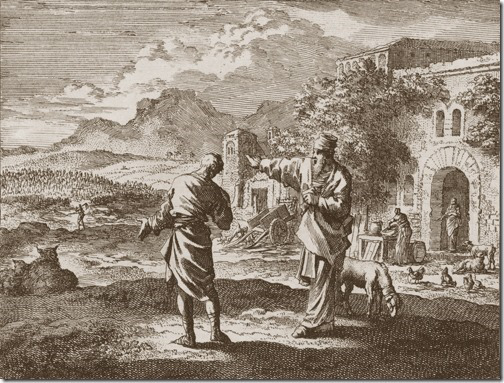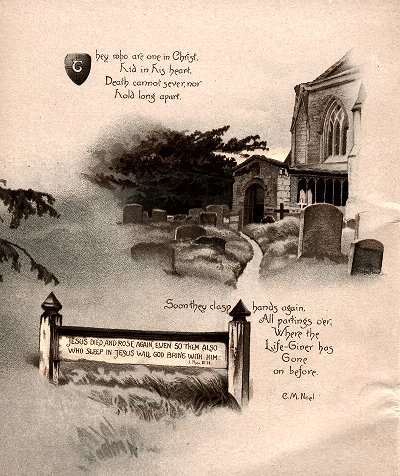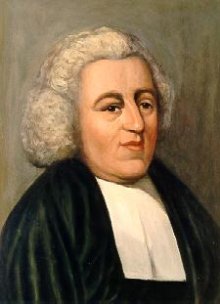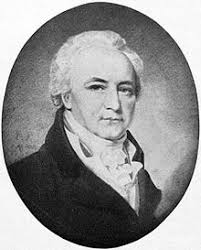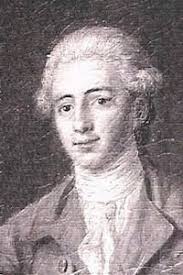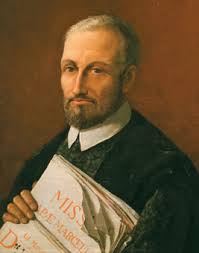Parable of the Two Sons, by Jan Luyken (1649-1712)
Mount Calvary Church
A Roman Catholic Congregation of
The Personal Ordinariate of the Chair of St. Peter
Anglican Use
Trinity XV
Common
Missa de S. Maria Magdalena, Willan
Prelude
Excerpt from Chorale No. 3, Cesar Franck (1822-1890)
Hymns
At the name of Jesus every knee shall bow
How sweet the name of Jesus sounds
Al hail the power of Jesus’ name
Anthems
Christus factus est a 3, Matteo Asola
O sacrum convivium, Tomás Luis de Victoria
Postlude
Fugue in G minor BWV 578, Johann Sebastian Bach
________________________________________
Prelude
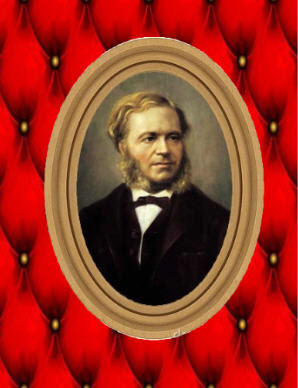 Excerpt from Chorale No. 3, Cesar Franck (1822-1890). In the summer of 1890, Cesar Franck was riding in a cab when it was struck by a horse-drawn trolley. He suffered a fainting spell and a slight head injury, but he thought it wasn’t serious enough to warrant treatment and went on his way. Soon it became difficult for him to walk and he had to give up his teaching at the Conservatoire and went on vacation to try and recuperate. He went back to the Conservatoire in the fall of 1890 but contracted an upper respiratory ailment that soon changed to pneumonia. He died November 8, 1890.
Excerpt from Chorale No. 3, Cesar Franck (1822-1890). In the summer of 1890, Cesar Franck was riding in a cab when it was struck by a horse-drawn trolley. He suffered a fainting spell and a slight head injury, but he thought it wasn’t serious enough to warrant treatment and went on his way. Soon it became difficult for him to walk and he had to give up his teaching at the Conservatoire and went on vacation to try and recuperate. He went back to the Conservatoire in the fall of 1890 but contracted an upper respiratory ailment that soon changed to pneumonia. He died November 8, 1890.
It was during this vacation that he completed the three Chorales For Organ. The Chorale No. 3 in A Minor begins as a toccata and has a contrasting second theme before it goes into a new theme played adagio. The finale of the piece hears the toccata return and the weaving in and out of the other themes heard in the piece.
Here is the complete Chorale No. 3 in A minor.
___________________________
At the name of Jesus every knee shall bow, with text by Caroline Maria Noel (1817—1877), is based on the early Christian hymn preserved in Philippians 2: “Have this mind among yourselves, which is yours in Christ Jesus, 6 who, though he was in the form of God, did not count equality with God a thing to be grasped, 7 but emptied himself, taking the form of a servant, being born in the likeness of men. 8 And being found in human form he humbled himself and became obedient unto death, even death on a cross. 9 Therefore God has highly exalted him and bestowed on him the name which is above every name, 10 that at the name of Jesus every knee should bow, in heaven and on earth and under the earth, 11 and every tongue confess that Jesus Christ is Lord, to the glory of God the Father.”
Caroline Maria Noel (1817—1877) surveys the history of redemption, from the kenosis, the self-emptying of God when the Son became man, to the Ascension, when He bore our humanity to the throne of God, from whence He shall come in His humanity to rule the cosmos forever.
Here is the original version:
1 At the name of Jesus
every knee shall bow,
every tongue confess him
King of glory now:
’tis the Father’s pleasure
we should call him Lord,
who from the beginning
was the mighty Word.2 At his voice creation
sprang at once to sight,
all the angel faces,
all the hosts of light,
thrones and dominations,
stars upon their way,
all the heavenly orders,
in their great array.3 Humbled for a season,
to receive a name
from the lips of sinners
unto whom he came,
faithfully he bore it
spotless to the last,
brought it back victorious,
when from death he passed:4 Bore it up triumphant
with its human light,
through all ranks of creatures,
to the central height,
to the throne of Godhead,
to the Father’s breast;
filled it with the glory,
of that perfect rest.5 Name him, Christians, name him,
with love strong as death,
but with awe and wonder
and with bated breath:
he is God the Saviour,
he is Christ the Lord,
ever to be worshipped,
trusted, and adored.6 In your hearts enthrone him;
there let him subdue
all that is not holy,
all that is not true:
crown him as your Captain
in temptation’s hour;
let his will enfold you
in its light and power.7 Surely, this Lord Jesus
shall return again,
with his Father’s glory,
with his angel train;
for all wreaths of empire
meet upon his brow,
and our hearts confess him
King of glory now.
Here is the First Congregational Church of Los Angeles.
The words are by Caroline Maria Noel (1817-1877). She was born in London, April 10th. 1817 and died at 39 Cumberland Place, Hyde Park, Dec. 7th. 1877. Her first hymn “Draw nigh unto my soul,” was written when she was 17. During the next three years she wrote about a dozen pieces. From 20 years of age to 40 she wrote nothing; and during the next 20 years the rest of her pieces were written. The first edition of her composition was published as The Name of Jesus and other Verses for the Sick and Lonely in 1861.
The tune KING’S WESTON is King’s Weston by Ralph Vaughan Williams’ melody, reverently in its somewhat somber manner. It has strong appeal, not least because it features a lovely, mournful folklike quality in the Dorian mode. The short lines of each stanza end in a dotted whole note, emphasizing the rhyme and the meaning: bow, now, Lord, mighty Word. The hymn begins and ends with the phrase King of glory: The Word has gone forth from God and has returned to God, and will come again in His gloried humanity; but we even now, the last word of the hymn, acknowledge him as the King of glory, who comes to us in the Eucharist.
Here is the Cardiff chorus.
___________________________
How sweet the name of Jesus sounds is by John Newton. It was inspired by the Song of Solomon 1.3: “Thy name is an ointment poured forth, therefore do the virgins love thee.” An ointment is sweet and has healing properties: “It makes the wounded spirit whole.” Our first hymn celebrates the cosmic power of Jesus; this hymn celebrates His intimate relationship with the believer, for He, the Word of God, is also our Shepherd, Brother and Friend.
1 How sweet the name of Jesus sounds
in a believer’s ear!
It soothes his sorrows, heals his wounds,
and drives away his fear.
2 It makes the wounded spirit whole,
and calms the troubled breast;
’tis manna to the hungry soul,
and to the weary rest.
3 Dear name! the rock on which I build,
my shield and hiding-place,
my never-failing treasury filled
with boundless stores of grace.
4 Jesus! my Shepherd, Brother, Friend,
my Prophet, Priest, and King,
my Lord, my Life, my Way, my End,
accept the praise I bring.
Here are two additional stanzas, which we will not use:
5 Weak is the effort of my heart,
and cold my warmest thought;
but when I see thee as thou art,
I’ll praise thee as I ought.
6 Till then I would thy love proclaim
with every fleeting breath;
and may the music of thy name
refresh my soul in death.
Here is the York Minster choir.
Like many hymns, it has undergone revision. Here is the original text:
1 How sweet the name of Jesus sounds
In a believer’s ear?
It soothes his sorrows, heals his wounds,
And drives away his fear.
2 It makes the wounded spirit whole,
And calms the troubled breast;
‘Tis manna to the hungry soul,
And to the weary, rest.
3 Dear name! the rock on which I build,
My shield and hiding place;
My never failing treas’ry, fill’d
With boundless stores of grace!
4 By thee pray’rs acceptance gain,
Altho’ with sin defil’d;
Satan accuses me in vain,
And I am own’d a child.
5 Jesus! my shepherd, husband, friend,
My prophet, priest, and king:
My Lord, my life, my way, my end,
Accept the praise I bring.
6 Weak is the effort of my heart,
And cold my warmest thought;
But when I see thee as thou art,
I’ll praise thee as I ought.
7 ‘Till then, I would thy love proclaim
With ev’ry fleeting breath;
And may the music of thy name
Refresh my soul in death.
In the original edition, Olney Hymns, the scripture reference for this hymn is the Song of Solomon 1.3: “Thy name is an ointment poured forth, therefore do the virgins love thee.” The sweetness and gentleness of teh words and music bear the mark of bridal mysticism, which Protestants inherited form medial Catholicism. In stanza 5 the line “Shepherd, Husband, Friend” has been changed to “Shepherd, Brother, Friend.”
Frank Coloquhoun in Hymns That Live comments:
“But what about the title “Husband”? Newton’s reason for using it is clear. He is interpreting his text from the Song of Solomon in allegorical fashion. The bridegroom in the ancient love-song is Christ, his bride is the Church. St, Paul uses the same metaphor in Ephesians 5,21ff.; so does the writer of teh Apocalypse (Rev 21.9). But Christ is not the “husband” of the individual soul and therefore cannot be addressed by the believer as “my husband.” The bride of Christ is the Church in its corporate and collective sense. Moreover…”the expression is unsuited to congregational use, as in no sense can it be said that Jesus is the Husband of men.”
John Newton, Clerk,
once an infidel and libertine, a servant of slaves in Africa,
was, by the rich mercy of our Lord and Saviour Jesus Christ,
preserved, restored, pardoned,
and appointed to preach the Faith
he had long labored to destroy.
John Newton (1725-1807) wrote this hymn and Amazing Grace.
At sea by the age of eleven, he was forced to enlist on a British man-of-war seven years later. Recaptured after desertion, the disgraced sailor was exchanged to the crew of a slave ship bound for Africa.
It was a book he found on board–Thomas à Kempis’ Imitation of Christ–which sowed the seeds of his conversion. When a ship nearly foundered in a storm, he gave his life to Christ. Later he was promoted to captain of a slave ship. Commanding a slave vessel seems like a strange place to find a new Christian. But at last the inhuman aspects of the business began to pall on him, and he left the sea for good.
While working as a tide surveyor he studied for the ministry, and for the last 43 years of his life preached the gospel in Olney and London. At 82, Newton said, “My memory is nearly gone, but I remember two things, that I am a great sinner, and that Christ is a great Saviour.” No wonder he understood so well grace–the completely undeserved mercy and favor of God.
ST PETER features descending motion after an initial rise. Composed by Alexander R. Reinagle (b. Brighton, Sussex, England, 1799; d. Kidlington, Oxfordshire, England, 1877), ST. PETER was published as a setting for Psalm 118 in Reinagle’s Psalm Tunes for the Voice and Pianoforte (c. 1836). The tune first appeared with Newton’s text in Hymns Ancient and Modern (1861); it is now usually associated with this text, for which it is a better match than for Psalm 118. The tune was named after St. Peter-in-the-East, the church in Oxford, England, where Reinagle was organist from 1822-1853.
Alexander R. Reinagle (1756-1809) was born in Portsmouth, England. His father was a Hungarian professional musician and his mother was Scots. He studied music with his father, then with Raynor Taylor in Edinburgh.
In 1786, Reinagle decided to try his fortune as a professional musician in the newly independent United States of America. He moved to New York City, and, later moved again to Philadelphia, which was the national capital at the time. He helped revitalize the musical life of Philadelphia in the 1790s, introducing that city to the music of Haydn and Mozart, as well as his own original compositions.
One of Reinagle’s admirers was American President George Washington. In 1789, Reinagle composed a “Chorus”, which was performed for Washington at Trenton, New Jersey, during Washington’s journey to his inauguration. Later, in Philadelphia, Nellie Custis, Washington’s step-granddaughter, was one of Reinagle’s music students. Washington was a frequent concertgoer, and could often be seen in the audience at Reinagle’s concerts. On Washington’s death in 1799, Reinagle composed a Monody on the Death of George Washington.
Beginning in 1791 Reinagle was associated with Thomas Wignell, the British actor, in the operation of a theatrical company that presented programs in Philadelphia and Baltimore. Their company, the New Company, was responsible for the building of both the New Theatre (or Chestnut Street Theatre) in Philadelphia, which opened in February 1793, and the Baltimore Theatre on Holliday Street, which opened in September 1794. The company presented both spoken and musical works. Reinagle was the musical director of the operation until his death in 1809. He hired George Gillingham, an English violinist, as conductor of the Chestnut Street Theatre. In the first six seasons of operation the company produced more than seventy-five musical works. Reinagle composed, arranged, or orchestrated music for all of the productions, and composed two ballad operas himself in 1795, The Volunteers and Sicilian Romance. Unfortunately, all but a few of the musical scores prepared by Reinagle for the Chestnut Street Theatre’s productions were lost in the fire that destroyed the theater on April 2, 1820.
Reinagle moved to Baltimore in 1803, the same year that Thomas Wignell died. He continued to be the musical director of the New Company’s productions at the Baltimore Theatre. Reinagle died on September 21, 1809 and is buried in St. Paul’s Burying Ground in Baltimore.
__________________________
All hail the power of Jesus’ name! was written by Edward Perronet (1726—1792), an associate of John Wesley, and was rewritten by several hands. Like out first hymn, it celebrates the power of the name of Jesus. It alludes to the Apocalypse. In Rev 19.16 Jesus is “King of Kings and Lord of Lords” on whose head “are many diadems,” Rev 19.12. The martyrs call from the altar, “I saw under the altar the souls of those who had been slain for the word of God and for the witness (martus) they had borne; they cried out with a loud voice” (Rev 6.9). We sinners, who have tasted the “wormwood and the gall” (Lam 3.19) of our evil deeds, offer our repentance as a trophy to the Lord of all. John sees every kindred, every tribe, “a great multitude…from every nation (Rev 7.9) who cry out “Salvation belongs to our God who sits upon the throne, and to the Lamb.” As we sing we join them in this confession.
Here is the 1940 Hymnal version:
1 All hail the pow’r of Jesus’ name!
Let angels prostrate fall;
Bring forth the royal diadem
And crown Him Lord of all.
Bring forth the royal diadem
And crown Him Lord of all.
Crown Him, ye martyrs of our God
Who from His altar call;
Extol the Stem of Jesse’s rod
And crown Him Lord of all.
Extol the Stem of Jesse’s rod
And crown Him Lord of all.
Hail Him, the Heir of David’s line,
Whom David Lord did call,
The God incarnate, Man divine,
And crown Him Lord of all.
The God incarnate, Man divine,
And crown Him Lord of all.
Ye seed of Israel’s chosen race,
Ye ransomed from the Fall,
Hail Him who saves you by His grace
And crown Him Lord of all.
Hail Him who saves you by His grace
And crown Him Lord of all.
Sinners, whose love can ne’er forget
The wormwood and the gall,
Go, spread your trophies at His feet
And crown Him Lord of all.
Go, spread your trophies at His feet
And crown Him Lord of all.
Let every kindred, every tribe,
On this terrestrial ball
To Him all majesty ascribe
And crown Him Lord of all.
To Him all majesty ascribe
And crown Him Lord of all.
Here is Samuel Metzger’s arrangement.
Here is the 1799 version:
1 All hail the pow’r of Jesus’ name!
Let Angels prostrate fall:
Bring forth the royal diadem,
To crown Him Lord of All.
2 Let high-born Seraphs tune the lyre,
And, as they tune it, fall
Before his face who tunes their choir,
And crown Him Lord of All.
3 Crown Him, ye morning stars of light,
He fix’d this floating ball;
Now hail the strength of Israel’s might,
And crown Him Lord of All
4 Crown Him, ye martyrs of your God,
Who from His altar call,
Extol the stem of Jesse’s rod,
And crown Him Lord of All.
5 Ye seed of Israel’s chosen race,
Ye ransom’d of the fall,
Hail Him who saves you by his grace,
And crown Him Lord of All.
6 Hail Him, ye heirs of David’s line,
Whom David Lord did call;
The God incarnate, Man divine,
And crown Him Lord of All.
7 Sinners! whose love can ne’er forget,
The wormwood and the gall,
Go–spread your trophies at his feet,
And crown Him Lord of All.
8 Let every tribe, and every tongue,
That hear the Saviour’s call
Now shout in universal song,
And crown Him Lord of All.
There is an alternative final stanza, found in many hymnals:
O that with yonder sacred throng
We at his feet may fall!
We’ll join the everlasting song,
And crown him Lord of all.
The eliminated stanza with “high-born Seraphs” is charming but odd. “Hail Him, ye heirs of David’s line,” a vocative, addressed presumably to the Jews, was changed to “Hail Him, the Heir of David’s line,” changing heirs to Heir, and putting it in apposition to Him, that is, Christ.
Edward Perronet (1726-1792). The Perronets of England, grandfather, father, and son, were French Huguenot emigres. David Perronet came to England about 1680. He was son of the refugee Pasteur Perronet, who had chosen Switzerland as his adopted country, where he ministered to a Protestant congregation at Chateau D’Oex. His son, Vincent Perronet, M.A., was a graduate of Queen’s College, Oxford. He became, in 1728, Vicar of Shoreham, Kent. He was close to with the Evangelical Revival under the Wesleys and Whitefield.
His son Edward was born in 1726. Born, baptized, and brought up in the Church of England, he had originally no other thought than to be one of her clergy. But, though strongly evangelical, he had a keen and searching eye for defects. A characteristic note to The Mitre, in referring to a book called The Dissenting Gentleman’s answer to the Rev. Mr. White, thus runs:—”I was born, and am like to die, in the tottering communion of the Church of England; but I despise her nonsense; and thank God that I have once read a book that no fool can answer, and that no honest man will.” This strangely overlooked satire is priceless as a reflection of contemporary ecclesiastical opinion and sentiment. It is pungent, salted with wit, gleams with humor, hits off vividly the well-known celebrities in Church and State, and is well wrought in picked and packed words. But it is a curious production to have come from a “true son” of the Church of England. It roused John Wesley’s hottest anger. He demanded its instant suppression; and it was suppressed; and yet it was at this period the author threw himself into the Wesleys’ great work. But evidences abound in the letters and journals of John Wesley that he was intermittently rebellious and vehement to even his revered leader’s authority. Earlier, Edward Perronet dared all obloquy as a Methodist. In 1749 Wesley enters in his diary:
“From Rochdale went to Bolton, and soon found that the Rochdale lions were lambs in comparison with those of Bolton. Edward Perronet was thrown down and rolled in mud and mire. Stones were hurled and windows broken.”
In 1755 arrangements to meet the emergency created by its own success had to be made for Methodism. As one result, both Edward and Charles Perronet broke loose from John Wesley’s law that none of his preachers or “helpers” were to dispense the Sacraments, but were still with their flocks to attend the parish churches. Edward Perronet asserted his right to administer the Sacraments as a divinely-called preacher. At that time he was resident at Canterbury, “in a part of the archbishop’s old palace.” He became one of the Countess of Huntingdon’s “ministers” in a chapel in Watling Street, Canterbury. Throughout he was passionate, impulsive, strong-willed; but always lived near his divine Master. In the close of his life he was an Independent or Congregational pastor of a small church in Canterbury. He died Jan. 2, 1792, and was buried in the cloisters of the great cathedral.
________________________
Anthems
Christus factus est pro nobis obediens usque ad mortem, mortem autem crucis. Propter quod et Deus exaltavit illum et dedit illi nomen, quod est super omne nomen.
Christ became obedient for us unto death, even death on the cross. Therefore God exalted Him and gave Him a name which is above all names.
Here is a Slavic group’s rendition.
Giovanni Matteo Asola (c. 1532-1609) was born in Verona, and began studying at Alga in 1546 in the congregation of secular canons. While in Verona he most likely studied with Vincenzo Ruffo. In 1569 he became a secular parish priest, and in 1577 became maestro di cappella at Treviso Cathedral; however, in 1578 he went to Vicenza Cathedral to take the equivalent job there, where the pay and musical opportunities were greater. He only stayed there four years, going to Venice in 1582,where he lived Venice until his death.
Asola was a rare case of a composer working in Venice who showed almost no stylistic influence from the Venetian school; indeed most of his works are in the Palestrina style, the idiom of the Roman School of composers. In his later works he began using a basso continuo, and he may have been one of the first composers to do so. The only musical feature he borrowed from the Venetian composers elsewhere in his adopted city was the idea of cori spezzati, spatially separated groups of singers; however, this musical style was widespread in northern Italy by the time he was writing, and by no means unique to Venice.
__________________________
O sacrum convivium, in quo Christus sumitur; recolitur memoria passionis ejus; mens impletur gratia; et futurae gloriae nobis pignus datur. Alleluia.
O sacred banquet, wherein Christ is received; the memorial of his passion is renewed; the soul is filled with grace; and a pledge of future glory is given to us. Alleluia.
Here is a Chinese group.
Tomás Luis de Victoria (sometimes Italianised as da Vittoria) (c. 1548 – 27 August 1611) was the most famous composer in 16th-century Spain, and was one of the most important composers of the Catholic Reformation, along with Palestrina and Orlando di Lasso.Victoria was not only a composer, but also an accomplished organist and singer as well as a priest. However, he preferred the life of a composer to that of a performer.
Postlude
Fugue in G minor BWV 578, Johann Sebastian Bach.
The Fugue in G minor, BWV 578, (popularly known as the Little Fugue), is a piece of organ music written by Johann Sebastian Bach during his years at Arnstadt (1703–1707). It is one of Bach’s best known fugues and has been arranged for other voices, including an orchestral version by Leopold Stokowski.
Early editors of Bach’s work attached this title to distinguish it from the later Great Fantasia and Fugue in G minor, BWV 542, which is longer in duration.
The fugue’s four-and-a-half measure subject is one of Bach’s most recognizable tunes. The fugue is in four voices. During the episodes, Bach uses one of Arcangelo Corelli’s most famous techniques: imitation between two voices on an eighth note upbeat figure that first leaps up a fourth and then falls back down one step at a time.
Here is the G minor fugue for organ.
Here is Stokowski’s version.
Here are the Swingle Singers.
And for saxophones.
And the Canadian Brass.
And for classical guitar.
For solo harp.
For harpsichord. (rather nice)
For clarinet quartet.
For trumpets.
For recorders.
While we’re at it, here is the D Minor fugue from Fantasia.
